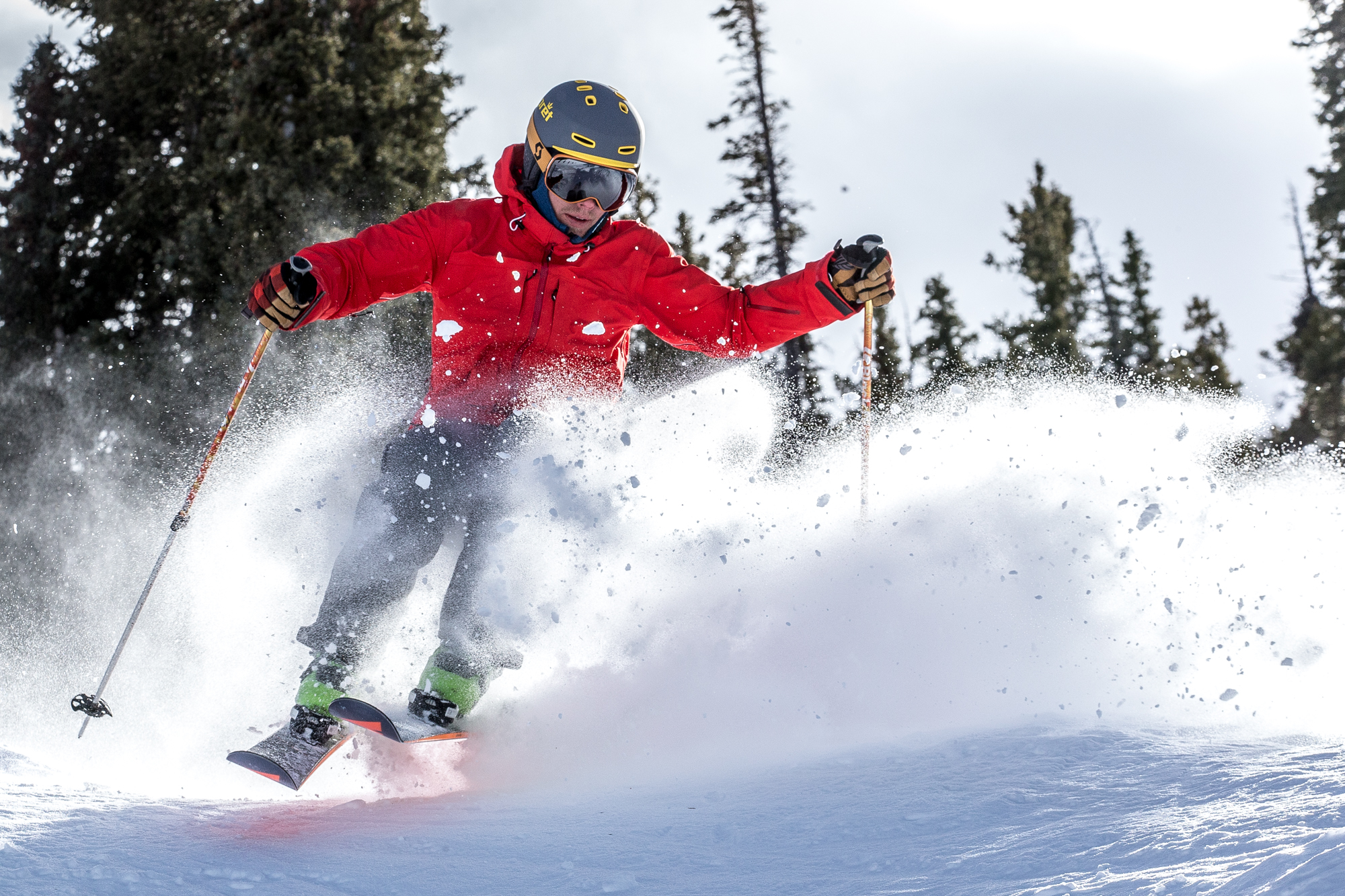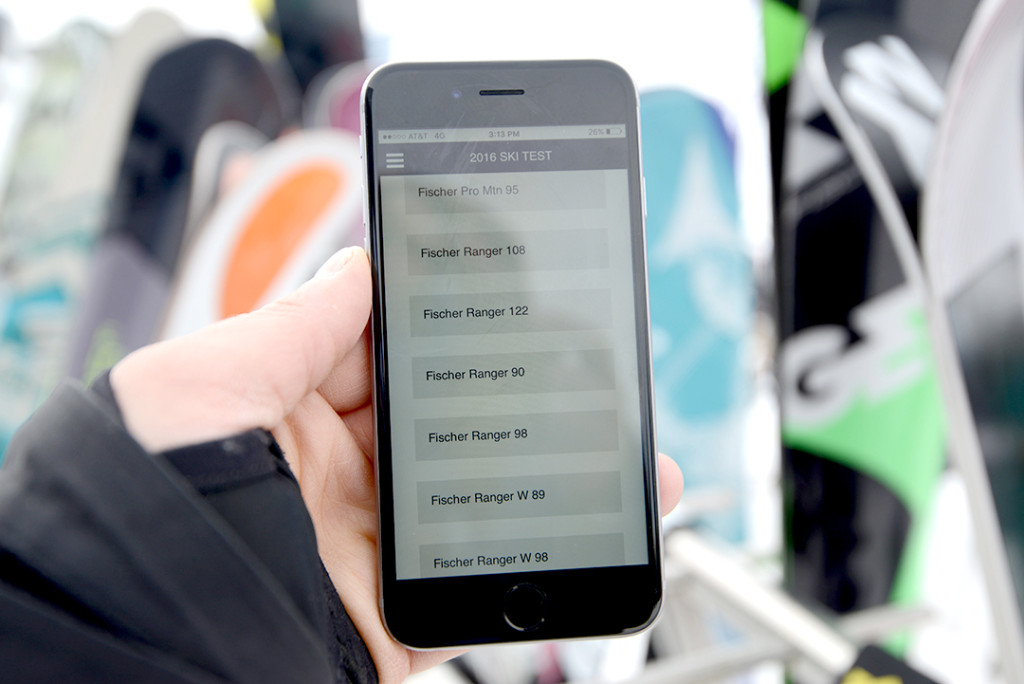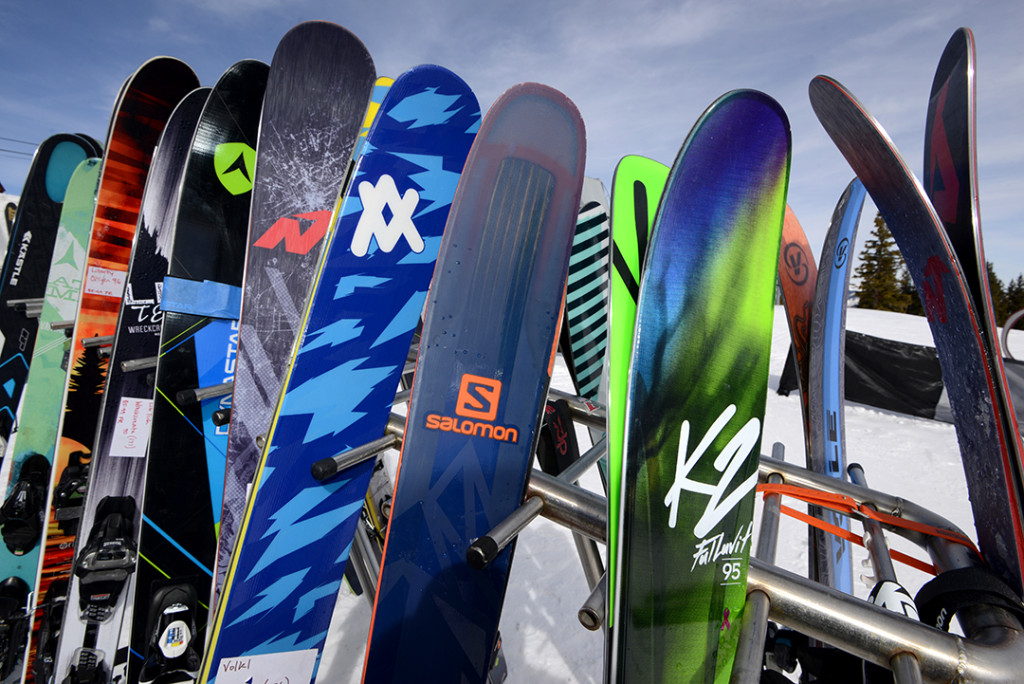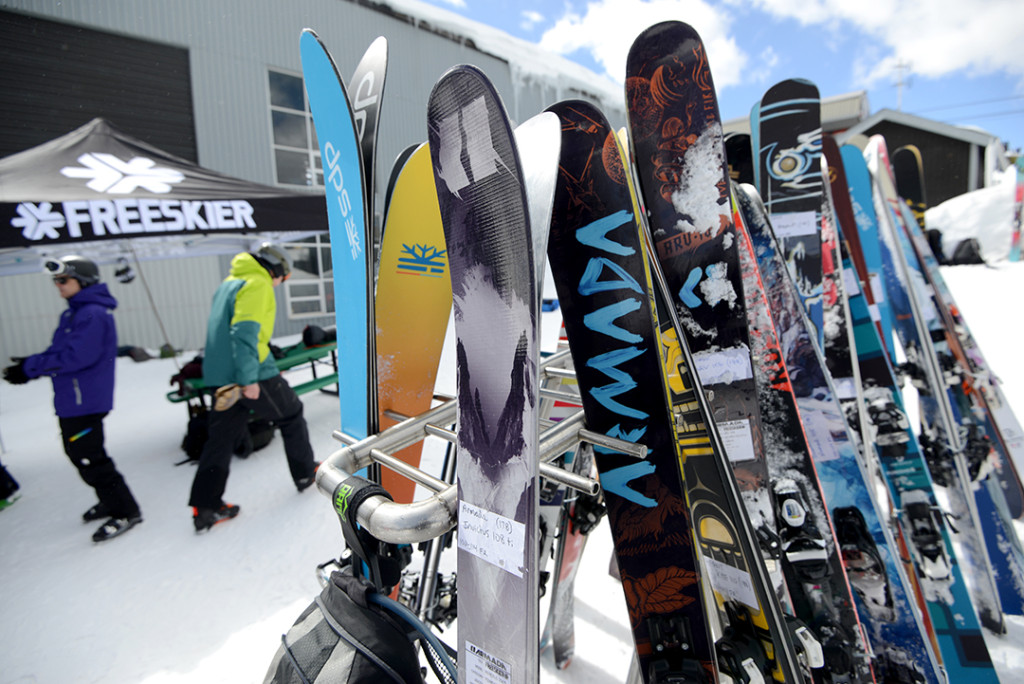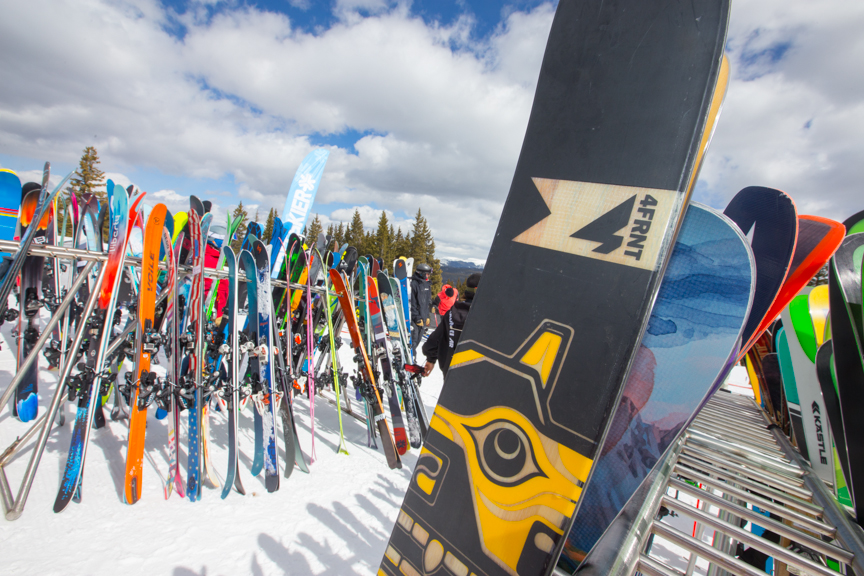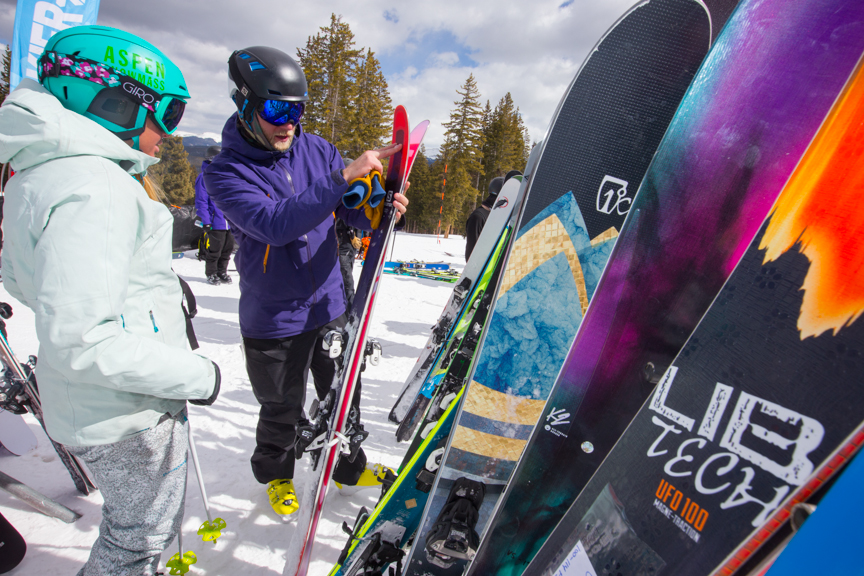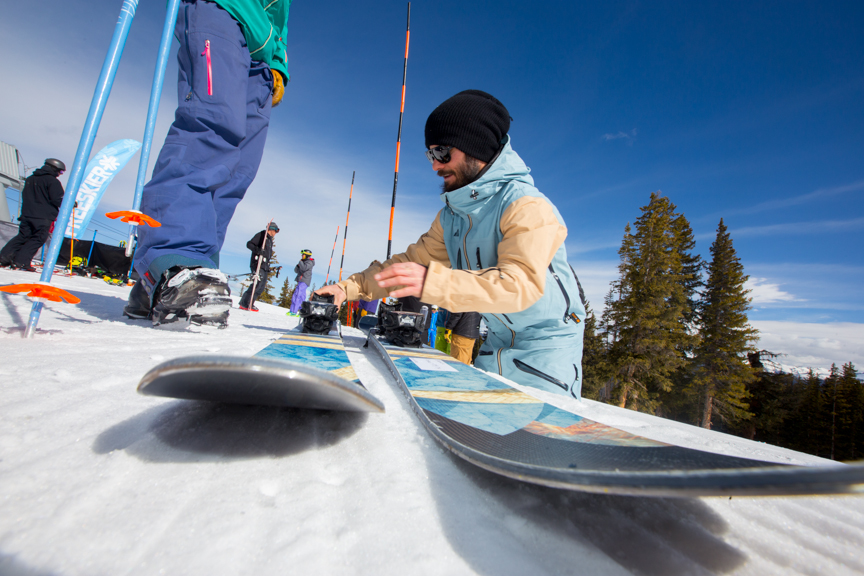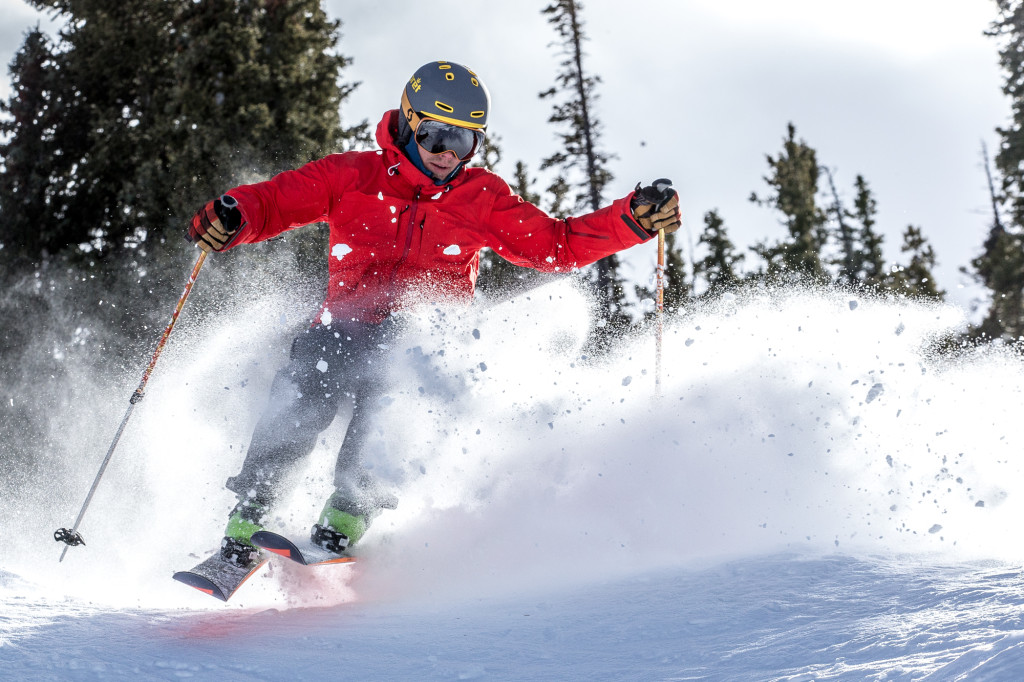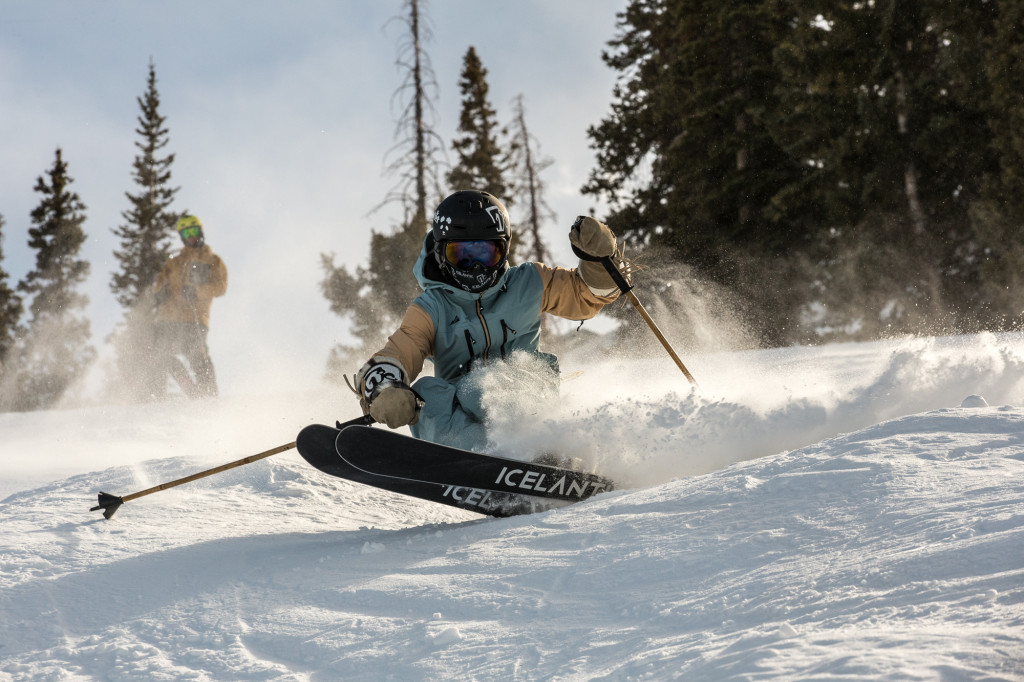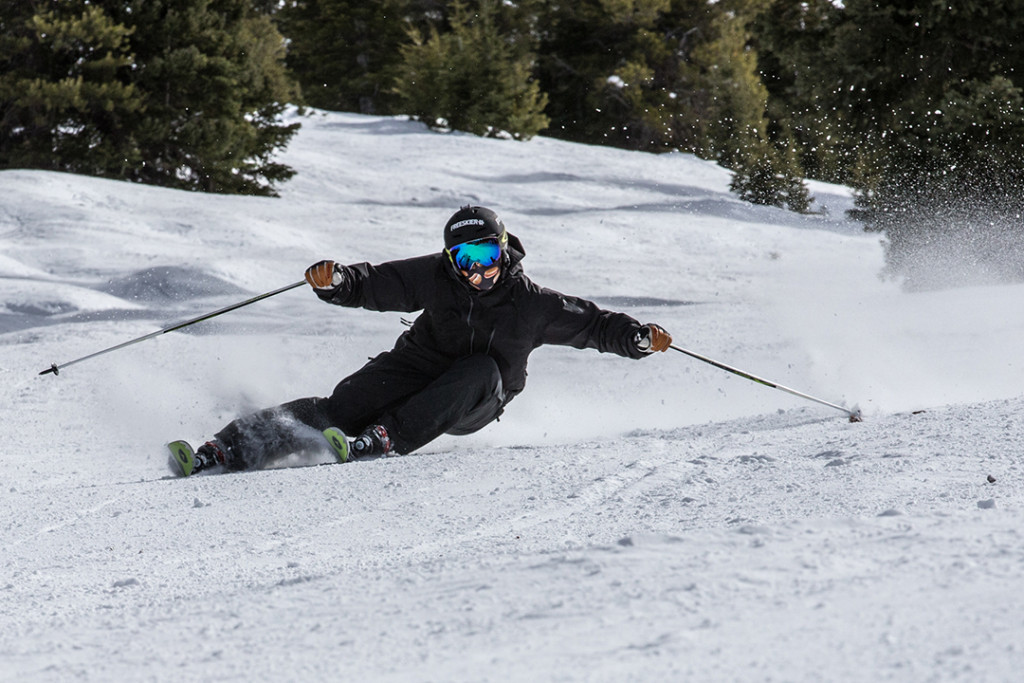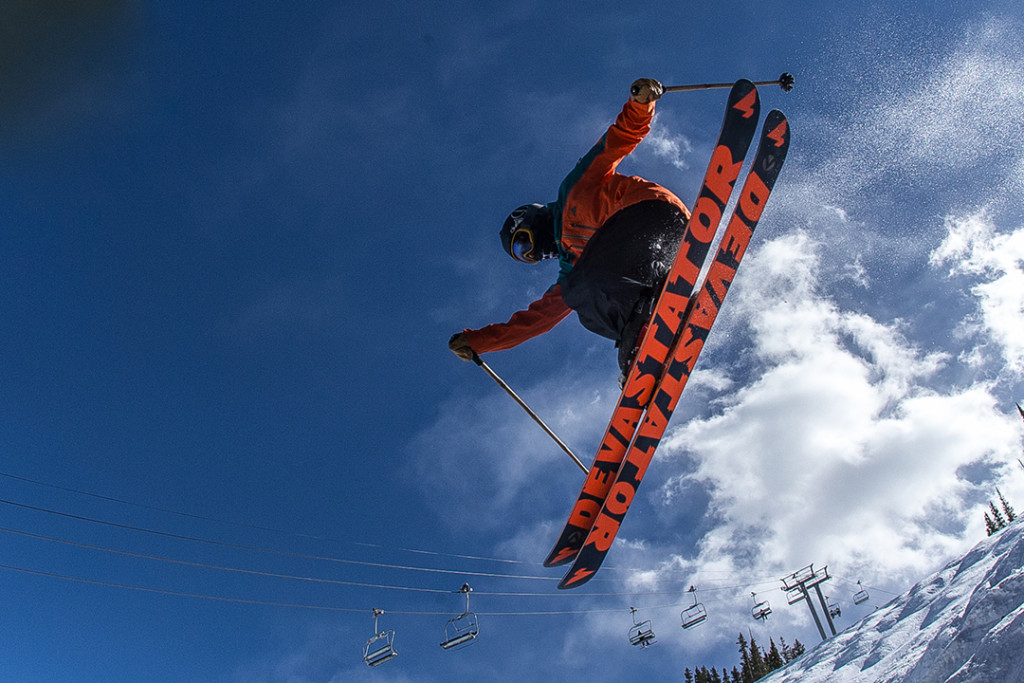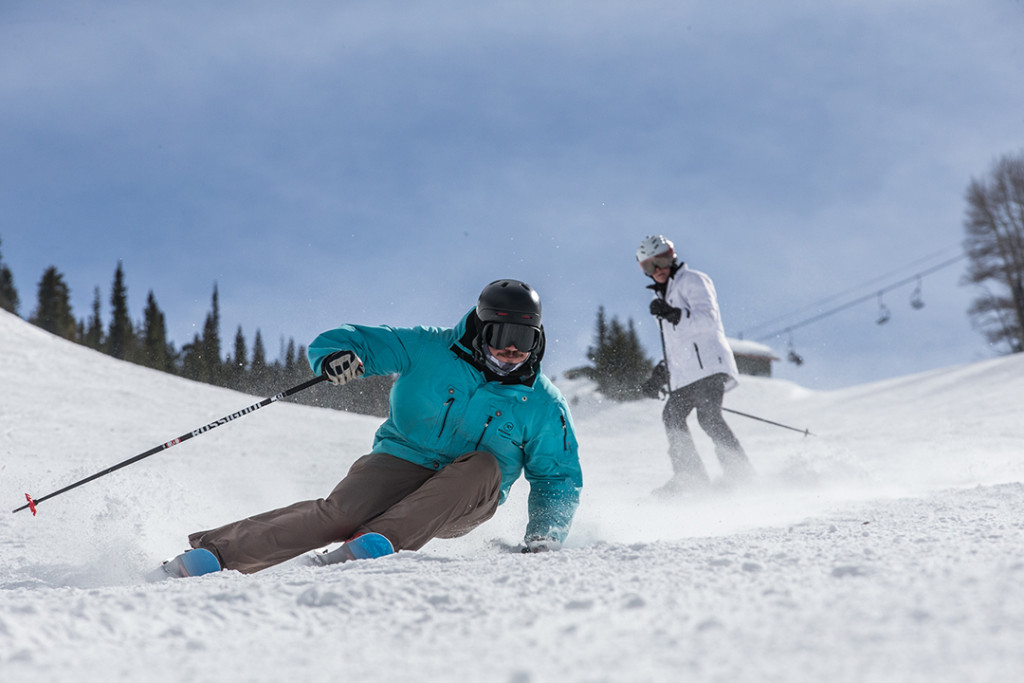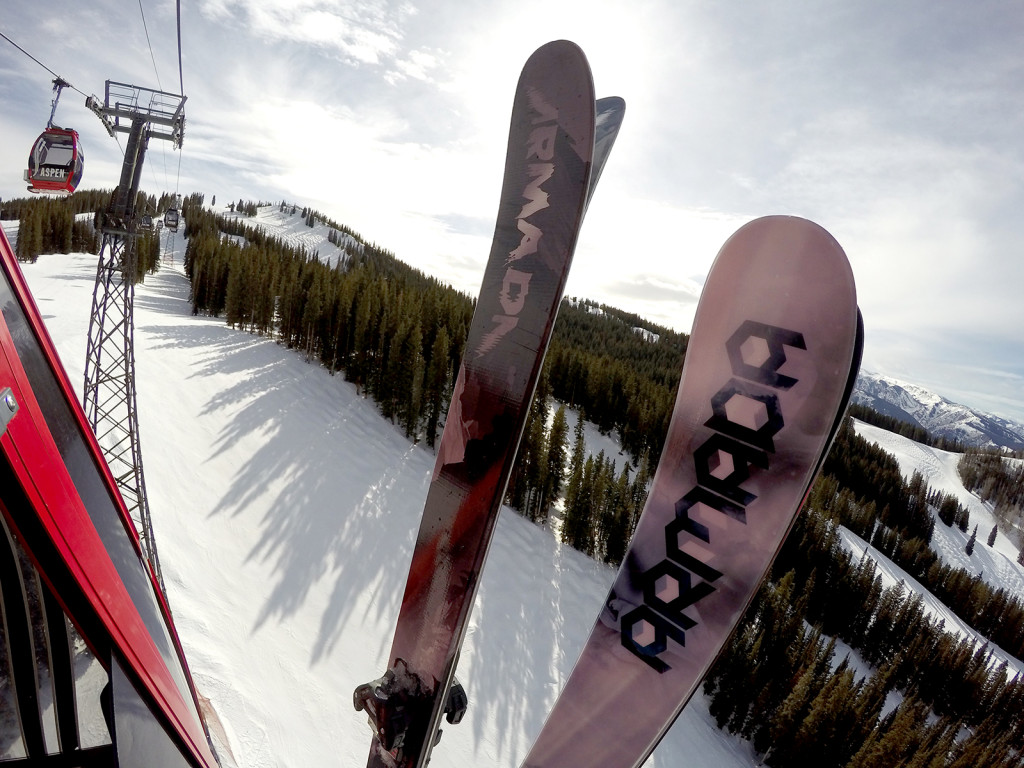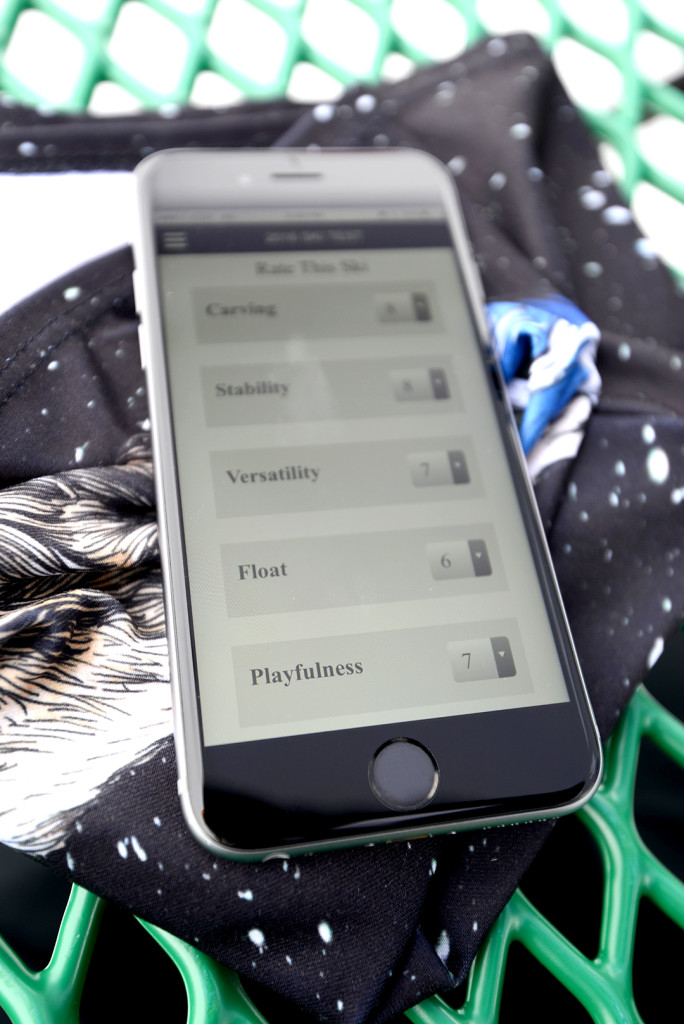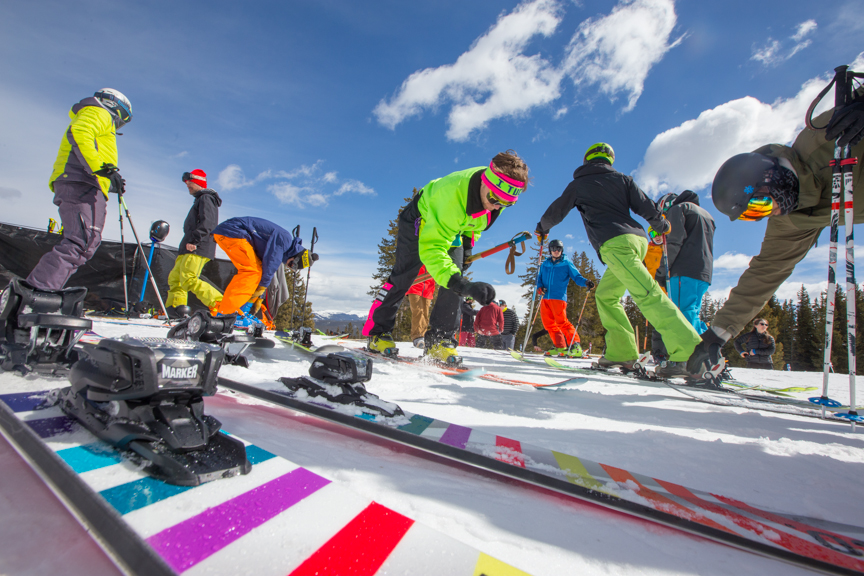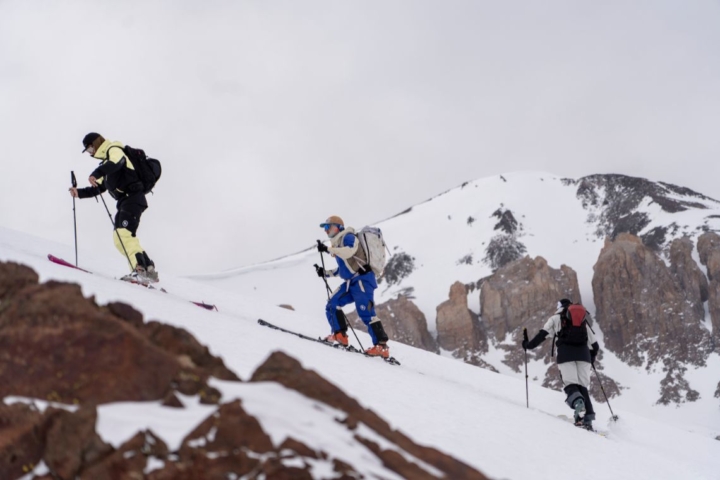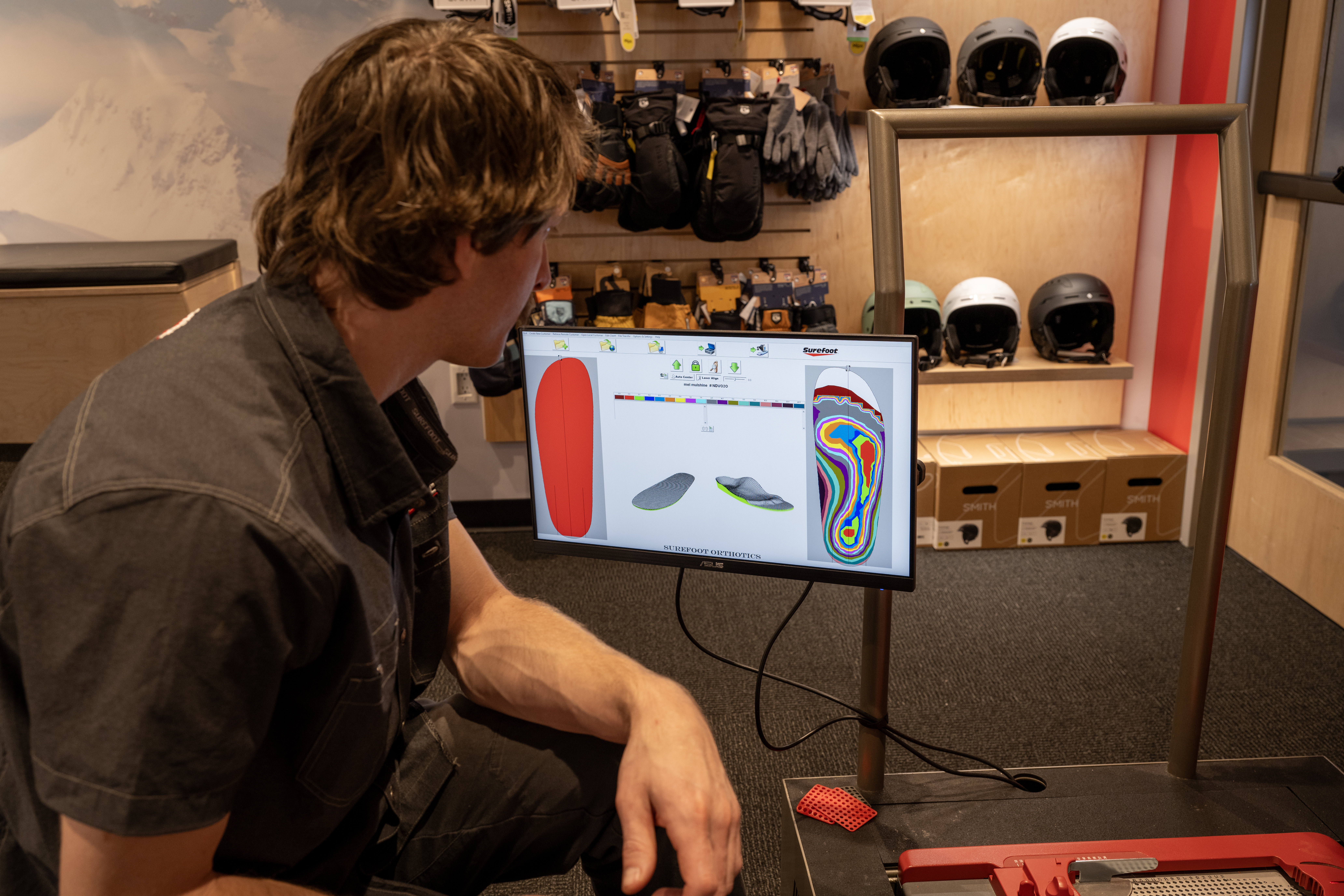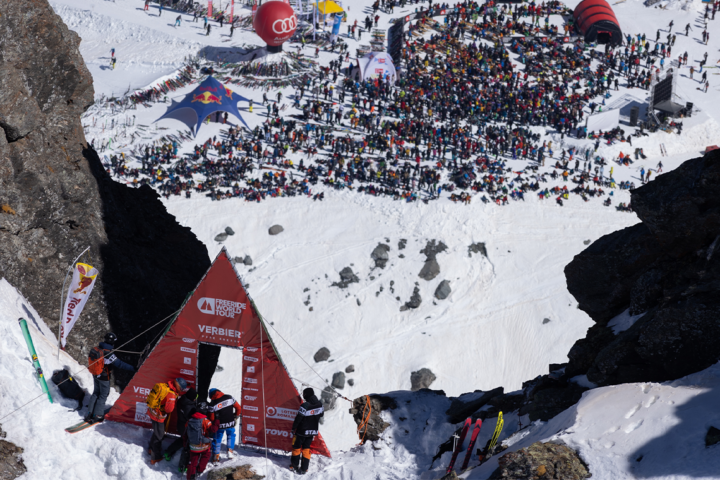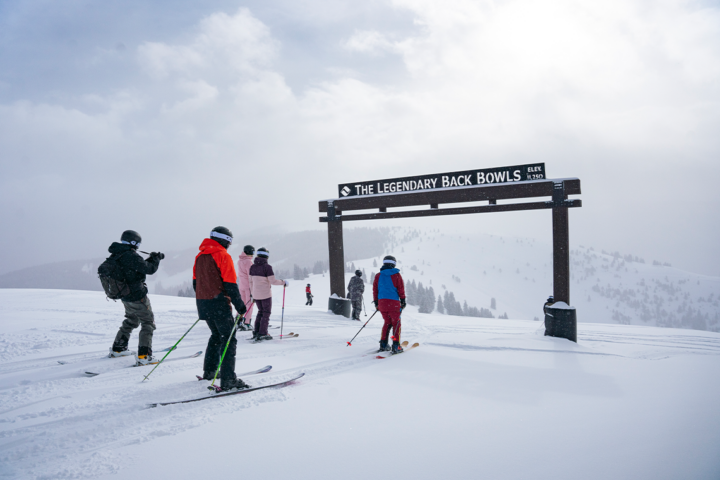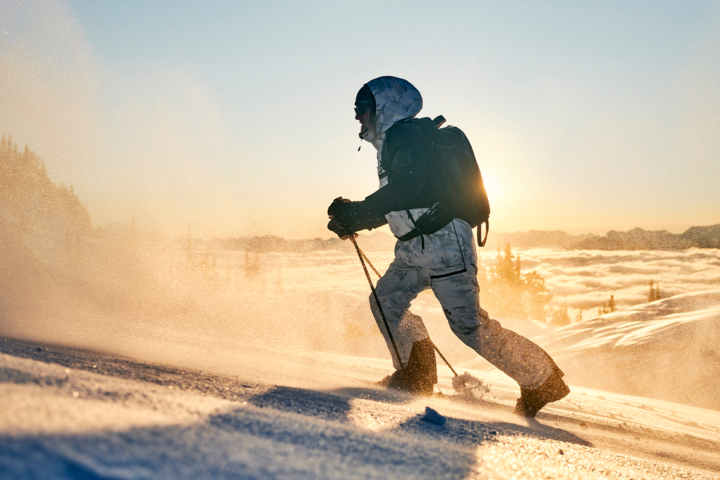We’re currently testing 250+ pairs of next year’s skis at Aspen Snowmass; the boards that fare well among our testing squadron will grace the pages of our annual Buyer’s Guide, ultimately helping you, our faithful reader, to purchase planks that’ll up your skiing experience. How do we test the skis, you ask? Here’s the breakdown in 10 simple steps.
Photos by Jeff Cricco, Jordan Curet & Henrik Lampert
1. Consult our custom testing app via your smartphone. See which skis are in need of additional reviews.
2. Once you hone in on a ski that needs some more lovin’, go grab it from the racks.
3. Depending on which ski you select, consult the corresponding, on-site brand representative to get the low-down on the product. Ask ’em things like, “What’s new? What do I need to know about this ski? What type of skier does this model cater to?”
4. Visit one of the on-site technicians to have your bindings adjusted appropriately.
5. Once you’re locked and loaded, it’s time to rip it, baby! Aspen Mountain is home to 76 trails, 675 acres and 3,267 feet of vertical. The venue is ideal for testing skis across a wide variety of terrain and snow conditions.
6. While ripping, consider the ski’s performance in the following categories: Versatility, carving, stability, float and playfulness. Keep close tabs on how the ski stacks up in each department. Soon, you’ll have to rate the ski in each category.
7. On your way down the hill, air it out, too, because duh. Be sure to impress any & all folks in your path.
8. Head back to the top. Enjoy the fine views of Aspen and the surrounding peaks along the way.
9. That ski you just ripped? Rate ‘er straight away via our custom testing app. It’s important to document your feelings in the moment while the strengths and nuances of a certain ski are still freshly embedded in your mind.
10. Repeat.
More info on how we rank the skis…
With a few simple clicks, testers rate skis on a scale of 1 to 10, based on the categories of carving, stability, versatility, float, playfulness and overall stoke. The ratings compound into a massive heap of testing data, directly at our fingertips. Just think: If a certain ski has received enough reviews to satisfy our needs, we’ll pull it from the racks right then and there, allowing our testers to migrate towards models that need further analysis. This process ensures a thorough and proper evaluation of each ski in the test. Moreover, the app allows testers to document their feelings in the moment, while the strengths and nuances of a certain ski are still freshly embedded in their minds. The data serves as the foundation of our Buyer’s Guide. Skis are arranged/organized according to waist width (90 to 99mm, 100 to 114mm and 115mm-plus).
Who gets to test?
The people integral to the success of the ski assessments are our beloved testers—our mad scientists. They come from all walks of life and locations across the United States. They’re built in various shapes and sizes and all have different ways of looking at the mountain. Honestly, they’re the wackiest bunch we know. Yet, despite comedic tendencies, you’d better believe that their skiing savvy is nothing to laugh at.
Our editorial team handpicks our ski testers. The group consists mostly of rippin’ Coloradoans who have made lives for themselves in the mountains. Some work in ski shops. A handful are former professional athletes. Others represent ski resorts. The rest are pure ski bums, “funemployed.” Rest assured, they’re highly qualified for the job, some even having tested with FREESKIER for the past decade.
Related: See what folks are saying about the ski test on Instagram
